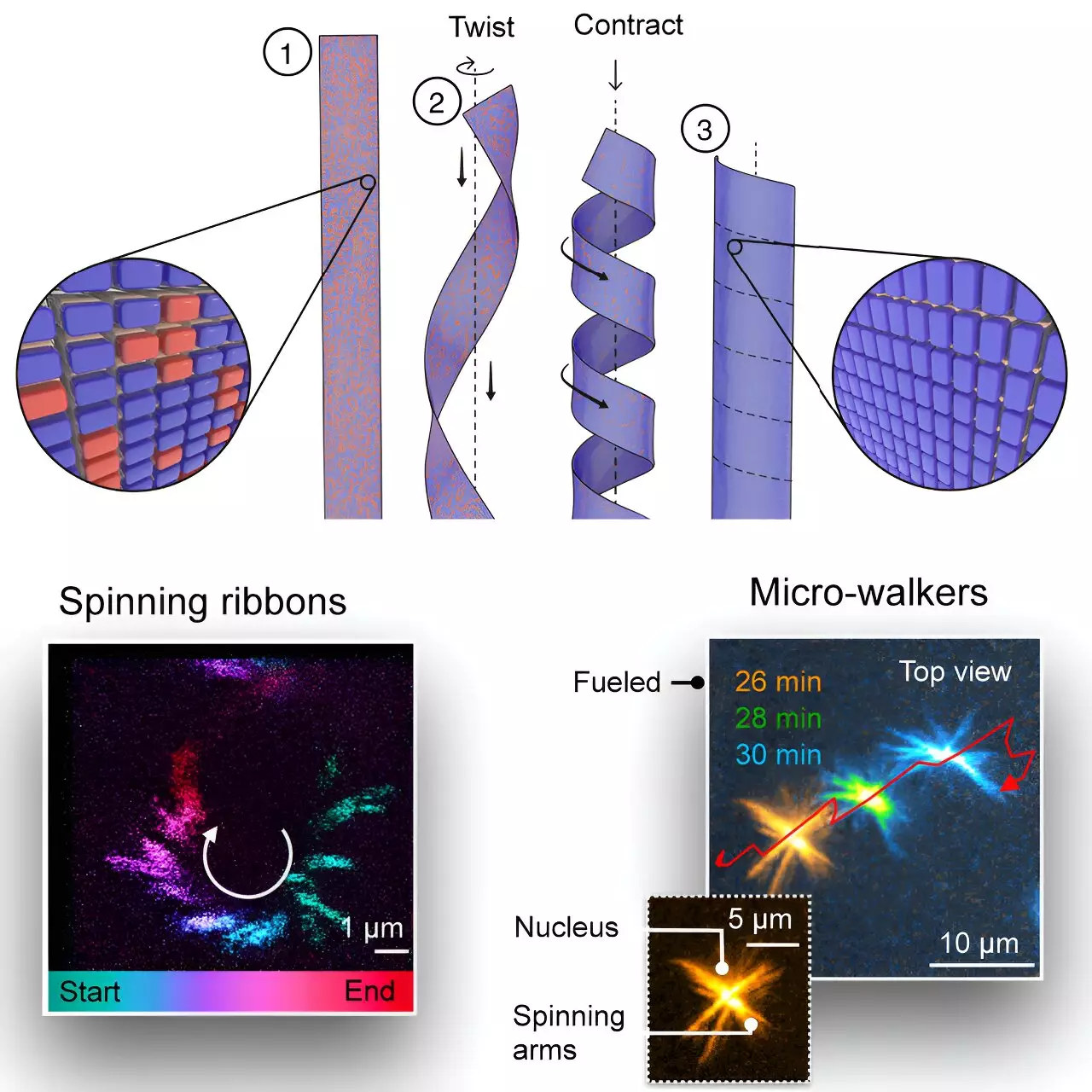Recent advancements at the Technical University of Munich (TUM) have introduced a groundbreaking artificial motor that operates on a supramolecular level, showcasing remarkable capabilities. This innovative wind-up motor, engineered from a unique molecular ribbon, can generate substantial power when activated by a chemical fuel. This development not only marks a significant stride in synthetic motor technology but also transcends previous limitations by mimicking biological processes observed in nature.
The primary component of this motor is a slender ribbon made from specially designed molecules. When external energy is applied, the ribbon undergoes a transformation, aligning itself and mimicking the motions of a small fin. This mechanism enables it to generate movement and push nearby objects. This is a pivotal advancement as the conversion of chemical energy to mechanical energy in synthetic systems has predominantly been a phenomenon observed in biological entities, particularly archaea that utilize ATP for locomotion via rotational tails known as flagella.
Intriguingly, until now, considerably little has been achieved in creating synthetic counterparts to these biological systems, which serve as a model for understanding how molecular structures can facilitate movement. By examining the mechanisms that allow primitive microorganisms to navigate their environments, researchers have been able to derive inspiration for constructing artificial analogs that can replicate these functionalities. The recent findings suggest that not only can chemical energy be harnessed in such a way, but it can also be finely modulated through adjustments in the chemical fuel used.
Under the supervision of Brigitte and Christine Kriebisch and Job Boekhoven, the team has revealed their ability to control various parameters of the ribbons’ movement. Researchers discovered that the rotation speed of these tiny motors could be adjusted according to the amount of fuel administered. Moreover, they could influence the direction of rotation—either clockwise or counter-clockwise—by modifying the molecular building blocks of the ribbons. Such tunability lays the groundwork for an array of applications that could drastically affect how we employ microscale technology in real-world scenarios.
Future Applications and Challenges
The implications of this technology are vast, particularly in the realm of nanomedicine. The researchers envision a future where these microscopic motors could operate as mobile drug-delivery systems, autonomously navigating through the bloodstream and targeting specific areas such as tumor cells. However, despite the innovative aspects of this research, hurdles remain. The currently utilized fuel poses risks to biological systems, presenting a challenge that researchers must overcome to make this technology viable for medical use.
The development of these chemically fueled supramolecular motors represents a significant milestone in the field of nanotechnology and supramolecular chemistry. As advancements continue, researchers are optimistic that further refinements will enable these micro-walkers to be harnessed for practical and transformative applications in the medical field. The journey from basic research to real-world implementation promises to be challenging, yet the potential benefits could revolutionize therapies and treatments in the not-so-distant future.

